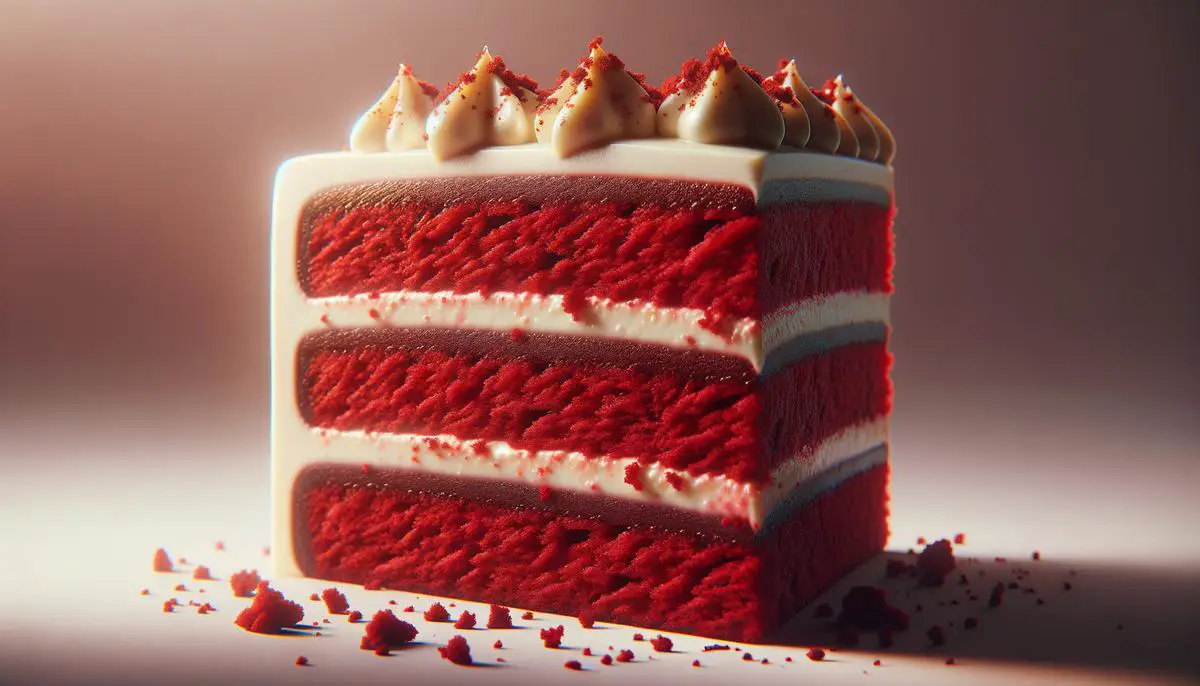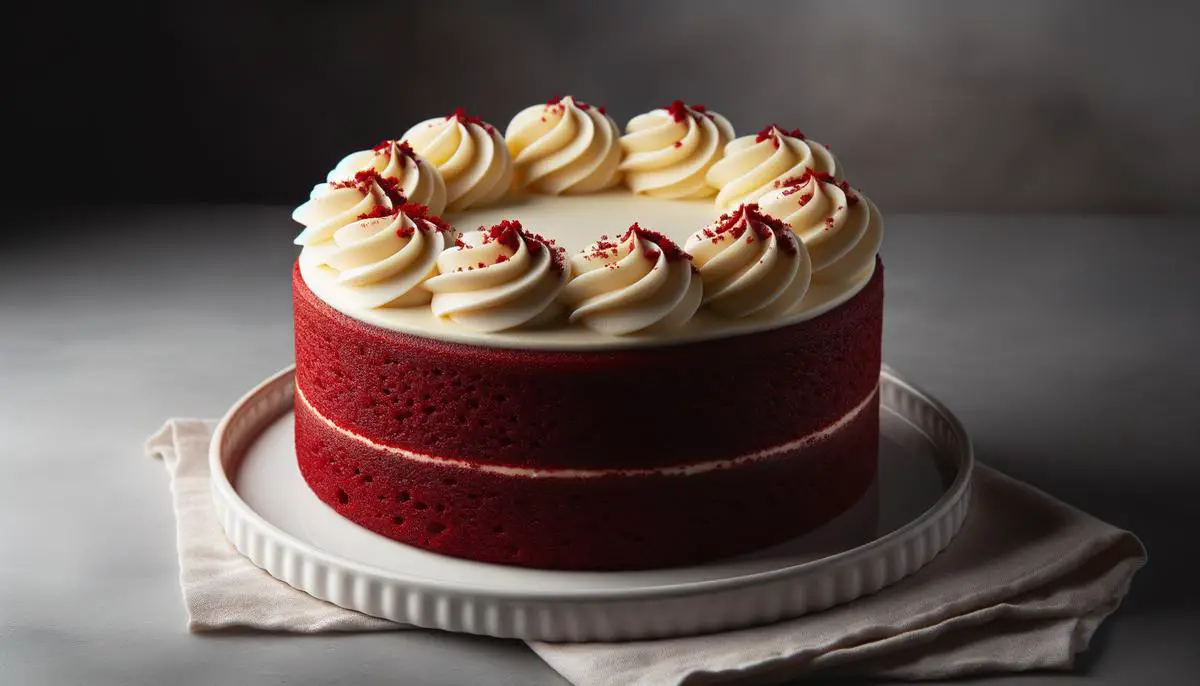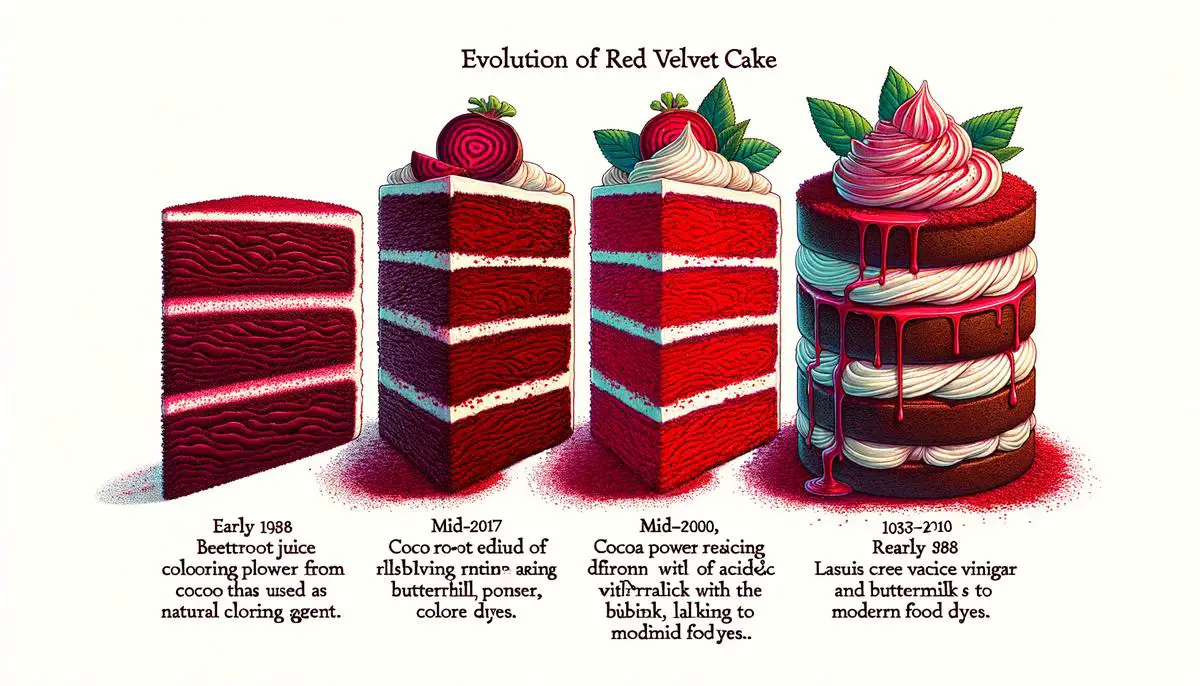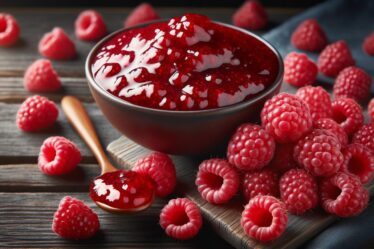
Imagine diving into a cake that’s as intriguing as it is delicious. That’s the essence of red velvet cake, a dessert that’s as much a feast for the eyes as it is for the palate. This unique cake stands out with its vibrant red color matched with a subtly sweet flavor that hints at cocoa and is perfectly balanced with tangy notes from buttermilk and vinegar. It’s a cake that carries the warmth of home with every bite, finished off with a creamy sweetness from its classic cream cheese frosting. The journey of red velvet cake is as rich as its taste, morphing from its traditional roots to become a beloved treat across generations, with each era adding its twist to the recipe. So, let’s slice into the history and distinct flavors that make red velvet cake a timeless dessert.
The Traditional Flavor Profile of Red Velvet Cake
Red velvet cake stands out in the vast world of desserts for its unique combination of flavors that defy a simple categorization. At its core, red velvet cake is a symphony of mild cocoa and buttermilk, with a hint of vinegar that subtly enhances its richness and complexity. Unlike other chocolate cakes that lead with a bold chocolatey punch, red velvet cake opts for a more nuanced approach. The cocoa is present but not overpowering, allowing the moist, velvet-like texture and slightly tangy flavor profile to shine. This balance is what gives red velvet cake its distinguished taste, setting it apart from its cacao-centric counterparts.
The magic of red velvet cake is further amplified by its traditional pairing with cream cheese frosting. This frosting adds a creamy and tangy counterpoint to the cake’s subtle flavors, creating a harmonious blend that tantalizes the palate. The slight acidity of the cream cheese frosting enhances the cake’s delicate cocoa notes, marrying the components into a singular dessert experience. The bold red color of the cake, achieved through food coloring, adds to its allure, making it not only a delight to taste but also a feast for the eyes. In essence, red velvet cake’s unique flavor comes from a meticulous balance of ingredients that together, produce a cake that is as unforgettable as it is delicious.

The Evolution of Red Velvet Cake
Over time, the journey of the red velvet cake flavor has seen a fascinating evolution that adjusts to the lifestyle and taste preferences of each era. Initially, the renowned red hue of this cake was achieved not through artificial food coloring but from a reaction between the cocoa powder and the acidic ingredients like buttermilk and vinegar. This natural process gave the cake a subtle color hint and a moist texture that became its hallmark. However, with advancements in food science and the advent of mass-produced food dyes, the visual appeal of red velvet cake was amplified, making its rich crimson color more consistent and eye-catching. Today, this cake stands out not just for its taste but also for its vibrant appearance, a true testament to the blend of tradition and modernity.
Furthermore, the red velvet cake’s flavor profile has expanded beyond the classic recipe to incorporate novel culinary trends and dietary preferences. Chefs and bakers around the globe have experimented with gluten-free flours, vegan substitutes for cream cheese frosting, and even the incorporation of beet juice as a natural colorant and sweetener. Such innovations not only make the red velvet cake more accessible to people with different dietary needs but also add intriguing new layers to its traditional flavor. From its humble beginnings to its current status as a versatile and beloved dessert, the red velvet cake’s flavor evolution is a mirror reflecting the changing tastes and technological advancements of our society.

Red velvet cake offers a delightful dance of flavors and history in every slice. Its journey from the elegant dining rooms of the past to the spotlight of modern bakeries showcases the adaptability and enduring appeal of this beloved dessert. Experimentation with its recipe has introduced new variations, but the essence of red velvet cake—its mild cocoa flavor, tangy undertones, and luscious cream cheese frosting—remains a testament to its legacy. As it continues to evolve, red velvet cake not only celebrates its rich past but also embraces the innovative spirit of today’s culinary world. Here’s to the next slice of history!



